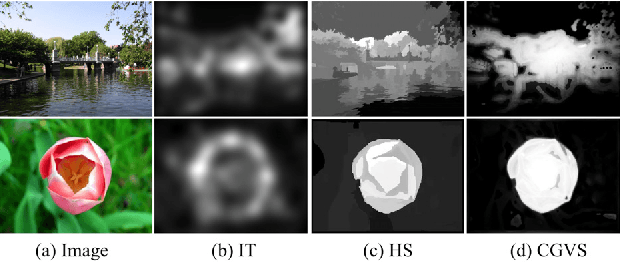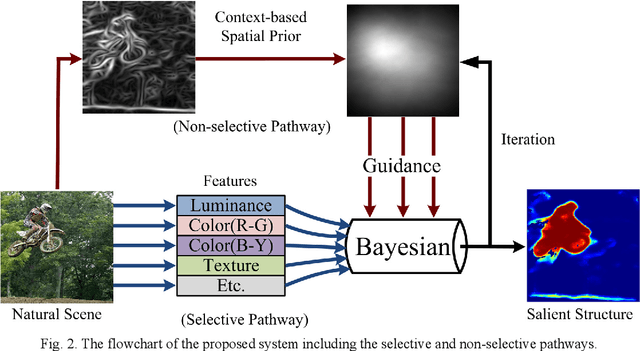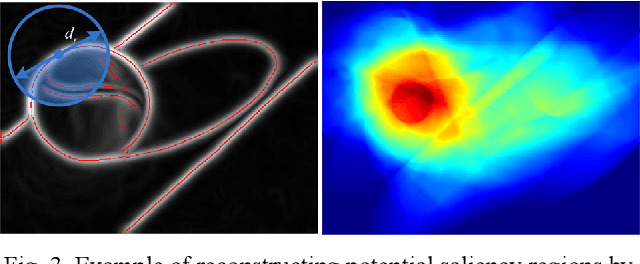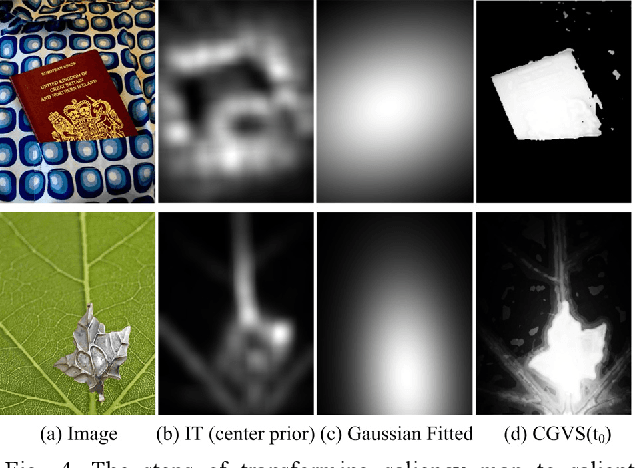Salient Structure Detection by Context-Guided Visual Search
Paper and Code
May 17, 2015



We define the task of salient structure (SS) detection to unify the saliency-related tasks like fixation prediction, salient object detection, and other detection of structures of interest. In this study, we propose a unified framework for SS detection by modeling the two-pathway-based guided search strategy of biological vision. Firstly, context-based spatial prior (CBSP) is extracted based on the layout of edges in the given scene along a fast visual pathway, called non-selective pathway. This is a rough and non-selective estimation of the locations where the potential SSs present. Secondly, another flow of local feature extraction is executed in parallel along the selective pathway. Finally, Bayesian inference is used to integrate local cues guided by CBSP, and to predict the exact locations of SSs in the input scene. The proposed model is invariant to size and features of objects. Experimental results on four datasets (two fixation prediction datasets and two salient object datasets) demonstrate that our system achieves competitive performance for SS detection (i.e., both the tasks of fixation prediction and salient object detection) comparing to the state-of-the-art methods.
 Add to Chrome
Add to Chrome Add to Firefox
Add to Firefox Add to Edge
Add to Edge